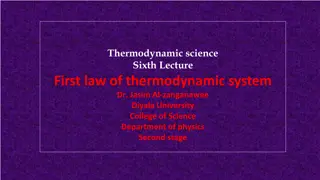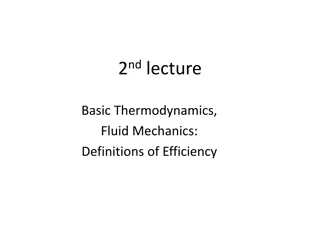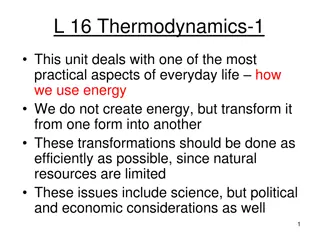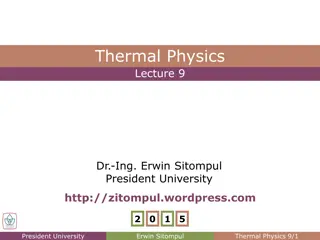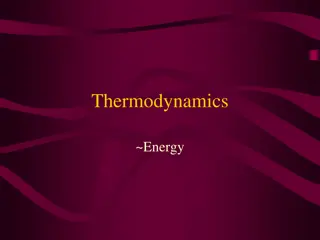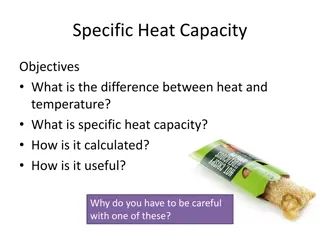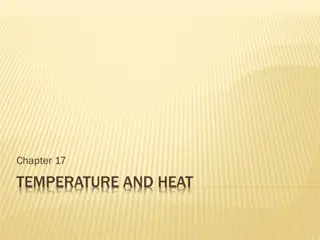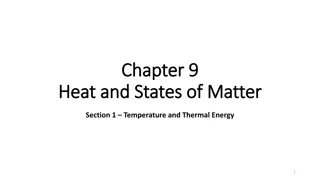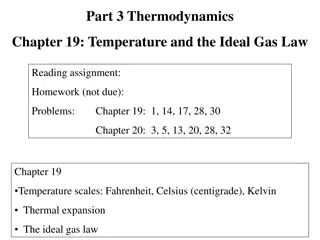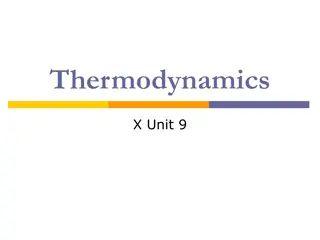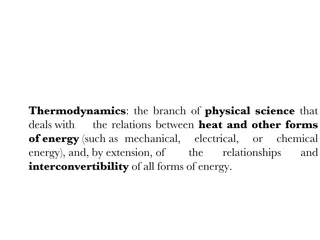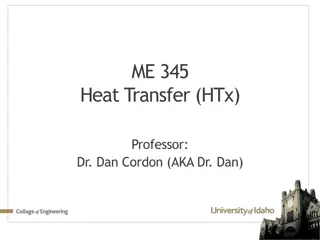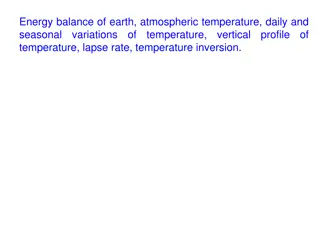Understanding Heat and Temperature in Thermodynamics
Thermal energy transfer, heat, and temperature play crucial roles in determining the behavior of systems in terms of kinetic energy and molecular motion. The zeroth law of thermodynamics establishes the relationship between heat and temperature. Heat transfer leads to changes in the average kinetic energy of molecules within a system, influencing its temperature. Specific heat capacity and energy calculations are essential in understanding heat transfer processes, as exemplified by cooling a hot beverage. Recognizing these concepts is fundamental in grasping the dynamics of heat and temperature in thermodynamics.
Download Presentation

Please find below an Image/Link to download the presentation.
The content on the website is provided AS IS for your information and personal use only. It may not be sold, licensed, or shared on other websites without obtaining consent from the author. Download presentation by click this link. If you encounter any issues during the download, it is possible that the publisher has removed the file from their server.
E N D
Presentation Transcript
Heat and temperature Heat, q, is thermal energy transferred (between two systems that are different in temperature) or from a hotter system to a cooler system that are in contact. Temperature is a measure of the average kinetic energy of the atoms or molecules in the system.
The zeroth law of thermodynamics says that no heat is transferred between two objects in thermal equilibrium; therefore, they are the same temperature. We can calculate the heat released or absorbed using the specific heat capacity C equation: q = m C T M is the mass of the substance T is the change in temperature The unit of heat is joul J or KJ
Relationship between heat and temperature Heat and temperature are two different but closely related concepts. Note that they have different units: temperature typically has units of degrees or Kelvin (K), and heat has units of energy, Joules (J). Temperature is a measure of the average kinetic energy of the atoms or molecules in the system.
For example, if we have a cup of hot coffee and cold tea. Water molecules in a cup of hot coffee have a higher average kinetic energy than water molecules in a cup of cold tea, which means that they are moving at a higher velocity.
When a system absorbs or loses heat, the average kinetic energy of the molecules will change. Thus, heat transfer results in a change in the system's temperature as long as the system is not undergoing a phase change. Example: we have 250 mL of hot tea which we would like to cool down before we drink it. The tea is currently at 370 K, and we'd like to cool it down to 350 K. How much thermal energy has to be transferred from the tea to the surroundings to cool the tea?
We are going to assume that the tea is mostly water, so we can use the density and heat capacity of water in our calculations. The specific heat capacity of water is 4.18 J/ g K, and the density of water is 1.00 g/ml. We can calculate the energy transferred in the process of cooling the tea using the following steps: 1. Calculate the mass of the substance We can calculate the mass of the tea/water using the volume and density of water:
m=250 mL1.00 g/mL=250g 2. Calculate the change in temperature T We can calculate the change in temperature, T, from the initial and final temperatures: T= Tfinal Tinitial =350K 370K = 20K 3. Solve for q Now we can solve for the heat transferred from the hot tea using the equation for heat:
Q= m x c x T = 250 g X 4.18 J/ g.K X (-20) K = -21000J Thus, we calculated that the tea will transfer 21000 J of energy to the surroundings when it cools down from 370 K to 350 K.




